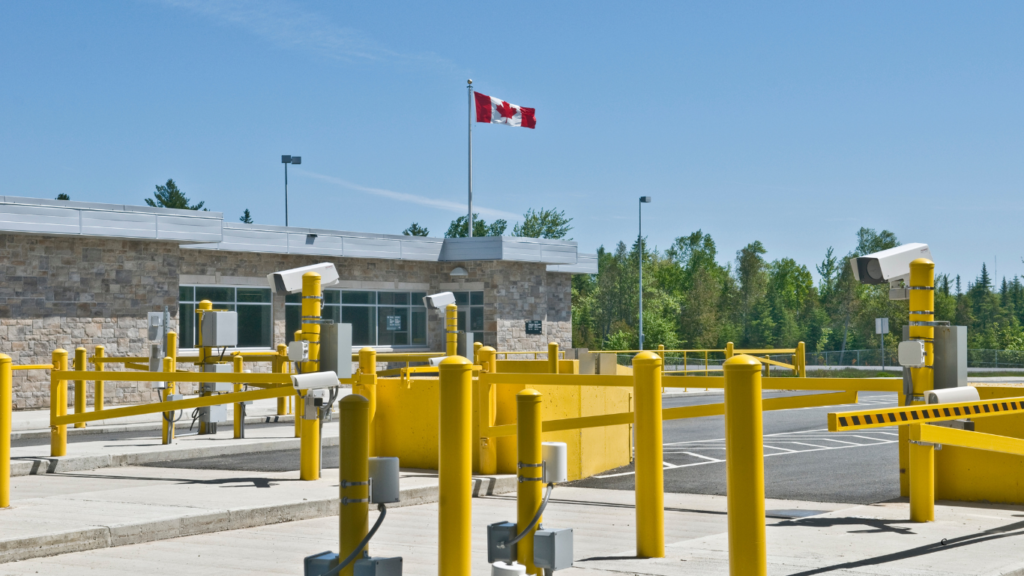Canada has unveiled a $1.3 billion new border security rules aimed at strengthening measures to combat illegal drugs and unauthorized migration while still maintaining the free flow of people and goods that are essential to North America’s prosperity. The investment reflects Canada’s commitment to securing its borders while fostering economic and social stability. Amongst other implications, the plan will have a direct impact on Express Entry applications, temporary residents who need to extend their stay, and asylum seekers.

The Five Core Pillars of the New Border Security Rules
1. Detecting and addressing fentanyl and its precursors
To combat the fentanyl crisis, Canada will invest in advanced technologies, including chemical detection systems, imaging tools, artificial intelligence (AI), and canine teams. This initiative will enhance the ability of CBSA officers to detect and intercept illegal drugs at various ports of entry. Additionally, Health Canada will support law enforcement by tracking the source of illegal substances.
2. New tools for law enforcement
The Royal Canadian Mounted Police (RCMP) will establish a new aerial intelligence task force consisting of helicopters, drones, and mobile surveillance towers. These resources will provide continuous surveillance across key entry points in addition to foot and vehicle patrols. The CBSA’s mandate will also be expanded to allow border officers to inspect exports, similar to the inspection of imports.
3. Improving operation coordination
The Canadian government is proposing the creation of a North American Joint Strike Force to target transnational organized crime, which will strengthen the collaboration between both countries.
4. Improving information sharing
A proposed amendment to the Sex Offender Information Registration Act will enhance the RCMP’s ability to share information about high-risk travellers with both domestic and international law enforcement agencies. Canada also aims to expand intelligence-sharing between federal, provincial, territorial and Indigenous authorities, ensuring a more coordinated and effective response to security threats.
5. Minimizing border volume to the US
This will focus on reducing congestion at the border to ensure efficient resource allocation.
Key Updates in the New Border Security Rules
1. The current situation
Canada continues to be a top destination for immigrants seeking a better life and visitors. The country is committed to ensuring that migration is safe and well-regulated. In 2024, Canada allocated more than $700 million over five years towards immigration, including $159 million specifically for the integrity of the asylum system.
- Asylum claims made by people crossing illegally have decreased from 165 per day in March 2023 to around 12 per day currently.
- With regard to foreign students, Canada shows the slowest growth of its population since early 2023.
2. End of flagpoiling
One key change is the termination of the practice of flagpoling, where individuals leave Canada with no intention of spending any time in the US, simply to take advantage of quicker border processing. The IRCC claims this practice wastes resources and slows down border traffic.
Temporary residents will need to apply online to extend their stay.
3. More control of immigration documents
Legislative amendments will allow Canada to change, suspend, or cancel immigration documents, including visas, as well as to suspend or cancel applications in the inventory if deemed to be in the best interest of the public (e.g. mass fraud).
4. Streamlining the asylum system
This will allow the asylum system to deal quickly with illegitimate claims, aligning with US measures.
5. Removal of LMIA points for Express Entry
Additional points the candidate receives under Express Entry for having a job offer will be removed to reduce potential LMIA (Labour fraud and the incentive to purchase it.
Pros
Phasing out flagpoling means lighter traffic at the Canada/US border.
Temporary residents can easily apply online to extend their stay.
Increased control of immigration documents and removing illegitimate asylum claims reduce the workload for the IRCC and allow them to focus on genuine cases.
If you do not have an LMIA, this will not affect your points on your Express Entry application.
Cons
Removing flagpoling and requiring temporary residents to submit their applications online could increase wait times for these applications, as all applications will be done by the same method. We can help make sure your application is filled in correctly to avoid unnecessary wait times due to errors.
If you have an LMIA, you will not get points for it in your Express Entry application. This, however, will apply to all candidates with an LMIA. There are other ways to increase the number of points in your express entry application, which we can help you with.

In what ways could the requirement for international students to obtain a new study permit before transferring between Designated Learning Institutions improve the oversight of the program—and what potential challenges could it pose?